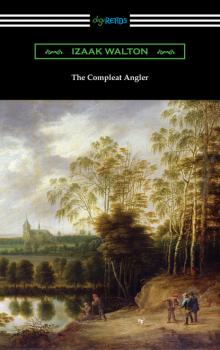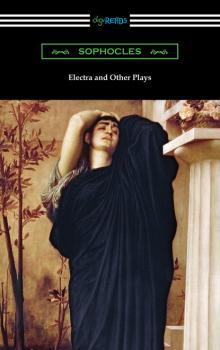MREADZ.COM - много разных книг на любой вкус
Скачивание или чтение онлайн электронных книг.The Compleat Angler
First published in 1653, Izaak Walton’s “The Compleat Angler” is a classic and much-loved treatise on the art of fishing. Immediately popular after its publication, “The Compleat Angler” was reprinted and updated numerous times by Walton. Written as a conversation between the fictional characters of the experienced angler Piscator and his student Viator, which was changed to a hunter named Venator in later editions, the treatise is part an instructional manual on how to catch and eat fish and part a loving tribute to the English pastoral lifestyle and its incredible scenery. Walton’s influential manual was written shortly after the end of the English Civil War, a time of great upheaval and unrest, and extolled a return to a simpler life in the countryside as an antidote to national and personal tragedy. In 1676, Walton’s friend and fellow fishing enthusiast, Charles Cotton, added a second part which included lessons on fly fishing and tying flies, thus expanding the volume significantly. Both of these two parts are included here in this edition. “The Compleat Angler” is a timeless masterpiece on the art and sport of fishing.
The Lais of Marie de France
Though little is known about Marie de France, her work changed romantic writing forever. “The Lais of Marie de France” challenged social norms and the views of the church during the twelfth century concerning both love and the role of women. She wrote within a court unknown to scholars, in a form of Anglo-Norman French. Inspired by the Greeks and Romans long before her, Marie de France sought to write something not only morally instructive, but memorable, leaving an indelible imprint on the reader’s memory. In her “Lais”, Marie de France confronts the issue of love as a topic of suffering and misery, fraught with infidelity. What was revolutionary about this, however, was the fact that the infidelity she addressed was committed by women, and in some circumstances condoned. This challenged the submissive role of women in her time, and illustrated them with a sense of power and free will. Her condensed yet powerful imagery remains timeless, still relevant and evocative to modern day readers. This edition follows the translation of Eugene Mason and includes a biographical afterword.
What Maisie Knew
First published serially in 1897, Henry James’s novel “What Maisie Knew” is the story of Beale and Ida Farange and their young daughter, Maisie. When Maisie is very young, Beale and Ida divorce and the court orders that the custody of Maisie be split between the two. Spending six months with each, Maisie finds herself in an unstable position as her immoral and frivolous parents use Maisie to intensify their animosity for each other. The novel follows Maisie from her earliest years through her adolescence and early adulthood. Throughout this time, there are no adults who are willing to truly take responsibility for Maisie and she is often forgotten in their romantic dramas and childish feuds. However, Maisie matures into a thoughtful and intelligent young lady, despite the instability of her upbringing. James’s novel was a harsh indictment of an English society that he felt was becoming morally corrupt and decadent, with children paying the price for the lack of adult responsibility. A critical success and one of James’s most appreciated novels, “What Maisie Knew” is the tragic tale of the consequences of a child caught between two unloving and irresponsible parents. This edition includes a biographical afterword.
The Memoirs of Sherlock Holmes
First published in 1893, “The Memoirs of Sherlock Holmes” is a collection of eleven detective stories of Sir Arthur Conan Doyle's most famous literary creation, Sherlock Holmes. Doyle had intended that this collection be the final stories of Holmes and Watson and killed off the beloved detective in the last story in this collection, “The Final Problem”, which contains the infamous confrontation between Holmes and his arch-nemesis, the criminal Moriarty, at the Reichenbach Falls. However, the public clamored for more tales of their favorite detective and Doyle brought Holmes back in “The Hound of Baskervilles” and the short story collection “The Return of Sherlock Holmes”. This collection contains some of the most exciting and famous of the adventures of the intrepid detective, such as the “Silver Blaze”, and its mysterious dog in the night, “The Greek Interpreter”, which stars Holmes’ intense and formidable brother Mycroft, and many more. These timeless tales of male friendship, complicated and intriguing mysteries, set in the foggy cobblestone streets of London, remain as thrilling and satisfactory as when they were first written. This edition includes a biographical afterword.
Electra and Other Plays
Only seven plays of the Ancient Greek dramatist Sophocles have survived to today. Sophocles is best known for his trilogy of dramas known as the “Three Theban Plays”, which is comprised of the plays “Oedipus Rex”, “Oedipus at Colonus”, and “Antigone”. The remaining four extant plays are collected together in this volume of “Electra and Other Plays”. First in this collection we find “Ajax”, the oldest of Sophocles plays which unfolds the destiny of the warrior Ajax after the Trojan War. Second there is “The Trachinian Maidens”, which gives an insightful account of the neglect that the wife of Hercules, Deianeira, and her family suffer as a result of her husband’s frequent and lengthy adventures. Thirdly we find the title drama, “Electra” which tells the classic tale of a young daughter’s revenge for her father’s death. Lastly in this collection there is, “Philoctetes”, which follows the life of a unique and important man through his trials and triumphs. In this volume the reader will find more evidence of why Sophocles is considered one of the greatest dramatists from classical antiquity. This edition follows the verse translations of Lewis Campbell and includes a biographical afterword.
The Ninety-Five Theses, On Christian Liberty, and Address to the Christian Nobility
Collected together in this volume are the three of Martin Luther’s most important works: “The Ninety-Five Theses”, “On Christian Liberty”, and “Address to the Christian Nobility”. Martin Luther, the founder of the Protestant movement and one of the most important figures in all of religious history puts forth his objections to the Catholic Church in these classic religious texts. “The Ninety-Five Theses on the Power and Efficacy of Indulgences” is Martin Luther’s list of concerns on corruption in the Roman Catholic Church. This 1517 document has since been widely acknowledged as the catalyst for the Protestant Reformation. “On Christian Liberty” is Luther’s third major treatise in which he details his doctrines on justification by faith and the priesthood of all believers, and eventually expands on the concept of freedom through grace and its meaning for mankind. Finally in this collection we find the “Address to the Christian Nobility” which predates “On Christian Liberty” and further discusses the religious beliefs of Martin Luther. This collection of foundational works of the Protestant movement is essential reading for religious scholars and lay people alike. This edition includes a biographical afterword.
A Wonder-Book for Boys and Girls
First published in 1851 by Nathaniel Hawthorne, “A Wonder-Book for Boys and Girls” is a captivating and classic retelling for children of some of the most famous stories from Greek mythology. Hawthorne followed this first collection of Greek tales with a sequel, “The Tanglewood Tales” in 1853. The book is set as a story-within-a-story with a fictional college student retelling these timeless myths to a group of school children. Hawthorne modified these legendary tales for a younger and more modern audience after first having the idea several years before to bring these important and influential stories to American children in a more accessible format. The birth of Hawthorne’s daughter in 1851 inspired the completion of the project. In this collection you will find tales such as “The Gorgon’s Head”, which recounts the slaying of Medusa by Perseus, “The Golden Touch”, which is the tale of King Midas, “The Three Golden Apples”, featuring Hercules, “The Chimaera”, which tells the story of Bellerophon and Pegasus, and three more classic myths. Hawthorne’s “A Wonder-Book for Boys and Girls” is an excellent and entertaining collection of stories of adventure and fantasy which serves as a great introduction to Greek mythology for younger readers. This edition includes a biographical afterword.
Life is a Dream
The death of Pedro Calderon de la Barca near the end of the 17th century marked the end of Spain’s Golden Age of literary and artistic excellence. Pedro Calderon de la Barca immense popularity and mastery of Spanish drama has earned him notoriety as the national dramatist of Spain. Although he came from a family of lower nobility, his theater is often associated with the royal court, as he presented many plays in the palace of Philip IV. His best known work, “Life Is a Dream”, borrows material from several other sources and transforms it into a masterful philosophical drama. The story of King Basil of Poland and his son, Segismund, is a complex and improbable plot featuring themes of the awakened sleeper, Christian grace, pagan superstition, and the popular Spanish theme of God’s grace revealing nobility. This play has been translated and performed in many different languages, and it remains an unquestioned masterpiece of world theater. This edition follows the classic translation of Edward Fitzgerald.
Anabasis (The Persian Expedition)
Widely considered the most famous work of the professional soldier and writer Xenophon, “Anabasis” is a true tale of dangerous adventure in ancient Greece. Though advised not to join the army of 10,000 by his friend Socrates, Xenophon does set out with Cyrus the Great in that man’s attempt to gain the empire of Persia from his brother. When this leader is killed in battle, however, the army loses cause and direction, and the result is a ‘marching republic’ in which the remainder of the army must fight their way home. Through endless miles of hostile territory where their foes crop up at every turn, Xenophon emerges as one of the few men capable of making decisions and leading the army through a variety of difficulties in a perilous retreat back to Greece. When at last they reach the sea and know they are near their homeland, their cries of fierce joy resound and become the stuff of legend. Told in forthright and unpretentious prose, this epic journey of extraordinary endurance over hardship remains an entertaining account that exemplifies Socratic philosophy, classic Greek writing, and the bygone valor of remarkable warriors. This edition follows the translation of H. G. Dakyns and includes a biographical afterword.
Catiline’s Conspiracy, the Jugurthine War, Histories
Gaius Sallustius Crispus, or Sallust, was a renowned Roman historian and a decided partisan of Caesar. After his retirement from statesmanship, Sallust devoted his time to the writing of literary and historical works that focused on great persons and events of his age. Although a lesser-known Roman historian, Sallust has become particularly revered for his intention to write scholarly, not merely anecdotal, discussions of events. Nietzsche described his style as “compact, severe, with as much substance as possible, a cold sarcasm against ‘beautiful words’ and ‘beautiful sentiments’.” His “Jugurthine War” relates the war in Numidia, circa 112 BC, of which Rome was the victor. It is most valued for his introduction, in which Sallust gives commentary on the moral decay and discord of the Roman political scene, and of his longing for the forgotten ideals of Rome. In his “Catiline’s Conspiracy”, Sallust’s deep concern for the decline of Rome is evident through the events and conspiracies of Catiline and his followers in the year 63 BC. Also included in this collection are the extant fragments of Sallust’s “Histories”.









